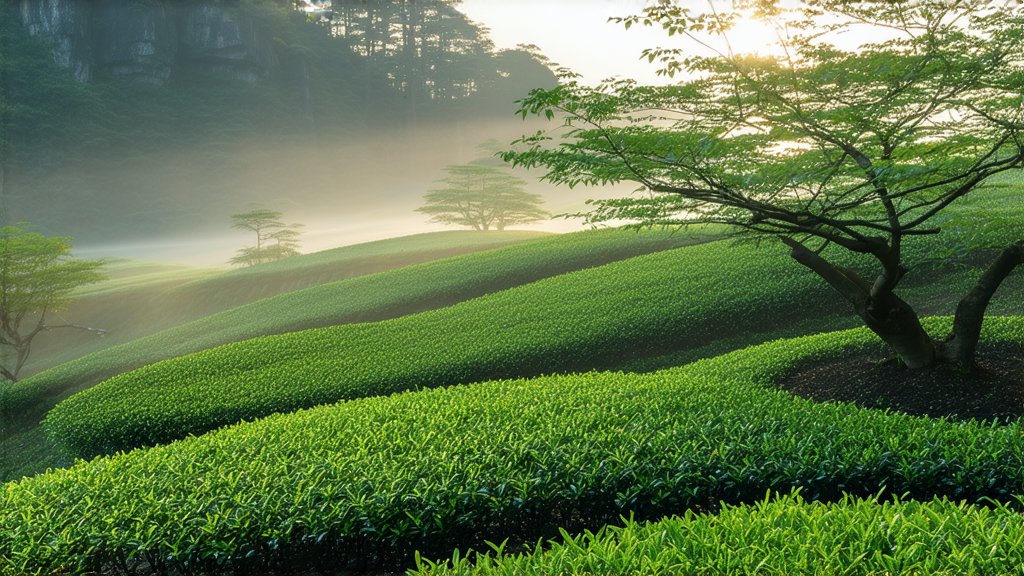
China's rich tapestry of tea culture is adorned with numerous varietals, each offering a unique glimpse into the country's longstanding relationship with this ancient beverage. Among these, Huangshan Mao Feng, a distinguished variety of yellow tea, stands out as a testament to China's intricate tea-making traditions and its commitment to producing teas that are not only delicious but also visually captivating. This article delves deep into the history, types, production process, and tasting techniques of Huangshan Mao Feng, providing an extensive guide for enthusiasts and connoisseurs alike.
History and Origin
Huangshan Mao Feng, often referred to as the "Golden Peak" in English, hails from the picturesque mountains of Huangshan (Yellow Mountain) in Anhui Province, China. This region is renowned for its breathtaking landscapes and has been a source of high-quality teas for centuries. The origins of Huangshan Mao Feng date back to the early Tang Dynasty (618-907 AD), making it one of the oldest tea varieties in China. It was during the Ming Dynasty (1368-1644 AD) that Huangshan Mao Feng gained widespread recognition, becoming a favorite among emperors and scholars alike. Its name, literally translated to "Golden Peak," reflects the tea's golden hue and the majestic peaks of its birthplace.
Types and Variations
While Huangshan Mao Feng is primarily known as a yellow tea, it exists in several variations that cater to different palates and preferences. The most common type is the classic Huangshan Mao Feng, which undergoes a meticulous hand-processing method that imparts its characteristic yellow color and delicate flavor profile. Additionally, there are other regional variations such as Mengding Huang Ya (Monkey King Yellow Buds) and Jun Shan Yin Zhen (Junshan Silver Needle), both of which share similar processing techniques but offer subtle differences in taste and aroma.
Production Process
The production of Huangshan Mao Feng is an art form that requires precision, patience, and a deep understanding of tea leaves' properties. The process begins in early spring when the first tender shoots appear. These shoots are carefully handpicked, ensuring that only the finest leaves and buds are selected. The picked leaves then undergo a series of steps that define their unique characteristics:
-
Withering: Freshly picked leaves are spread out in a shaded area to lose moisture gradually. This step helps soften the leaves and prepares them for further processing.
-
Fixation: The withered leaves are gently heated to halt enzymatic activity, preserving their natural flavors and preventing oxidation. This step is crucial in maintaining the tea's yellow color.
-
Rolling: The fixed leaves are rolled by hand or using specialized equipment to shape them into tight curls. This process helps release the tea's essential oils and enhances its aroma.
-
Dehumidification: The rolled leaves are left to dry slowly, allowing excess moisture to evaporate. This step ensures that the tea retains its crisp texture and vibrant color.
-
Baking: Finally, the leaves are baked at low temperatures to remove any remaining moisture and stabilize their flavor profile. This step also contributes to the tea's signature smoothness and mellowness.
Tasting Techniques
To fully appreciate the nuances of Huangshan Mao Feng, it is essential to adopt proper tasting techniques. Here are some guidelines to enhance your tea-drinking experience:
-
Visual Appreciation: Observe the dry leaves before brewing, noting their uniformity, color, and shape. After brewing, examine the liquor's color, which should be a pale yellow with a slight greenish hue.
-
Aroma: Take a moment to inhale the fragrance of the brewed tea. Huangshan Mao Feng exudes a delicate, floral aroma with hints of fruitiness and sweetness.
-
Flavor: Sip the tea slowly, allowing it to coat your palate. Notice the initial sweetness followed by a subtle bitterness that quickly dissipates, leaving a refreshing aftertaste. The tea should have a well-balanced flavor profile with no overpowering notes.
-
Mouthfeel: Pay attention to the tea's texture in your mouth. Huangshan Mao Feng is known for its smooth, velvety mouthfeel, which is a result of its careful processing.
-
Aftertaste: Savor the lingering flavors after swallowing. A good quality Huangshan Mao Feng will leave a pleasant, lasting impression on your palate.
In conclusion, Huangshan Mao Feng represents the epitome of Chinese tea craftsmanship, combining tradition, artistry, and nature's bounty into a single cup. Its rich history, diverse variations, meticulous production process, and exquisite tasting experience make it a must-try for any tea enthusiast. Whether you are a seasoned connoisseur or a curious beginner, exploring the world of Huangshan Mao Feng will undoubtedly deepen your appreciation for this golden elixir from the heart of China.